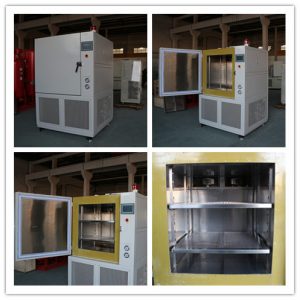What is the difference between glycol chillers and water-cooled chillers?
Both glycol chillers and chillers can be used to satisfactorily dissipate the heat generated during production. The fundamental difference between the two types of chillers is the variation in their freezing point and heat transfer capabilities.
Pure ethylene glycol or a mixture of ethylene glycol and water has a much lower freezing point than pure water. This means that glycol-based chillers are better suited for low-temperature environments. In contrast, water has a better ability to retain and conduct heat in the associated process than glycol mixtures. As a result, the heat transfer efficiency for water chillers will be higher than for glycol chillers.
Water: Using water as a coolant is an economical method as water is readily available at minimal cost in most cases. Alternatively, purified water (deionized water, reverse osmosis) can be used in water-based chillers for greater cooling efficiency.
Ethylene Glycol: Ethylene glycol-based coolants consist of either ethylene glycol or propylene glycol. Although the two variants have similar physical properties, they should never be mixed. The main benefits of glycol coolants are improved corrosion resistance and freeze protection.
Why use ethylene glycol for cooling?
Using a glycol-water mixture as a coolant has several advantages over using plain water as a coolant. These advantages are due to its unique physical properties, which include a lower freezing point than water.
Related recommendations
-
Introduction To The Preparation Of Low Temperature Chiller’ Operation
1885Why do low temperature chiller need to be ready for operation? We must be very clear that only when we are ready to check the low temperature chiller can we run the equipment better, can we run it more efficiently. Before running the low temperatu...
View details -
What is the local overheating machine room water chiller?
1613What is the local overheating machine room water chiller?
View details -
Causes of reduced heat transfer effect of vertical ultra-low temperature refrigerators
1585If the outer frost layer of the vertical ultra-low temperature refrigerator is too thick or excessively dusty, it may cause the external temperature of the equipment to be mostly lower than 0, resulting in low heat transfer efficiency of the evapo...
View details -
The consequences of the screw refrigerator not returning oil and the treatment method
1922In the cooling operation of the screw refrigerator, if the refrigerant is in contact with the lubricating oil, the lubricating oil in the compressor will enter the condenser with the operation of the refrigeration system and the gaseous or misty r...
View details
 LNEYA Industrial Chillers Manufacturer Supplier
LNEYA Industrial Chillers Manufacturer Supplier












